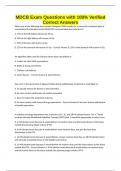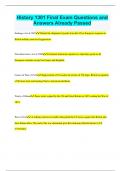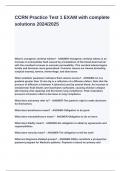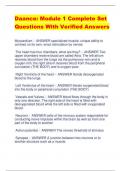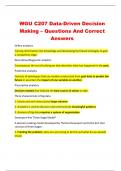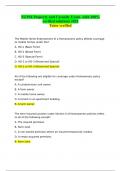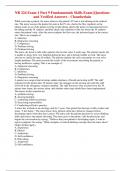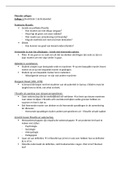Exam (elaborations)
MDCB: Mock Exam 2 Questions with 100% Verified Correct Answers
- Course
- Institution
MDCB: Mock Exam 2 Questions with 100% Verified Correct Answers A patient receiving treatment to the head and neck region has experienced a skin reaction and mucositis at a total dose much lower than anticipated. The radiation oncologist requests an evaluation of the treatment. Which of the followi...
[Show more]
